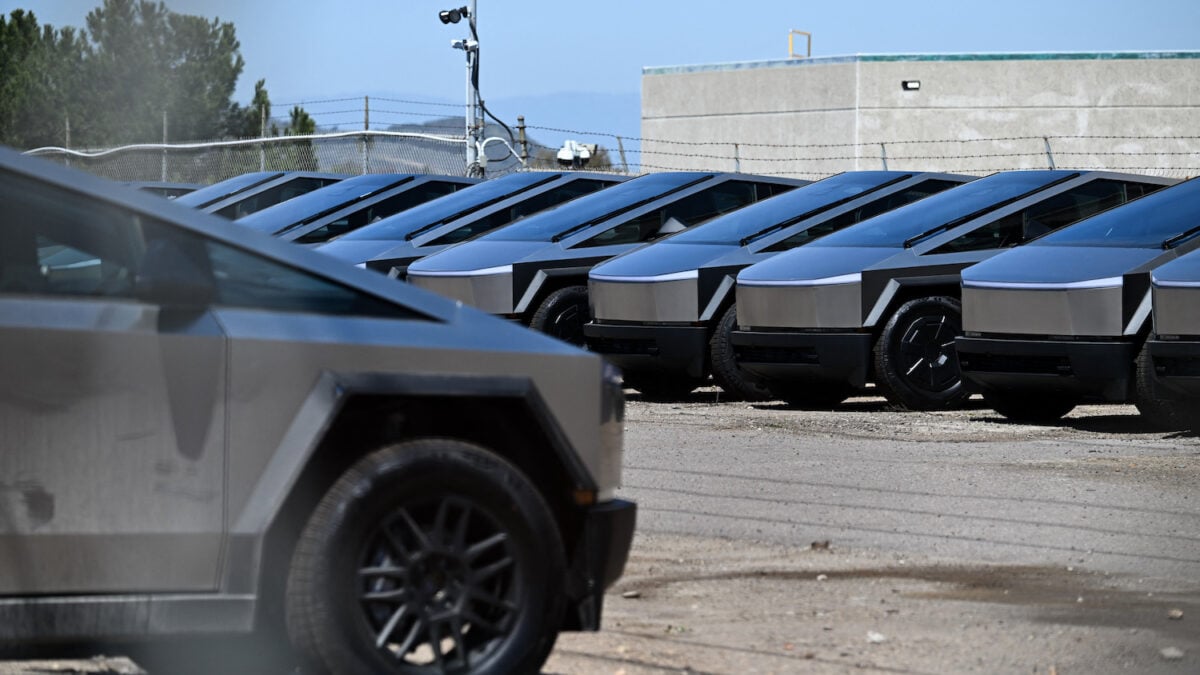The Air Force Wants to Use Cybertrucks for Target Practice

The U.S. Air Force seems to have finally found a good use for Elon Musk’s Tesla Cybertrucks: blowing them up with missiles.
The War Zone was first to spot that America’s aerial defense wing plans to purchase two of Tesla’s rolling heaps of metal for “use as targets for precision munitions during testing and training.” Associated contracting documents seem to imply that America’s “enemies” may soon be using Cybertrucks and that, as a result, the Air Force needs to practice shooting at them. The cars are two of 33 (including Bongo trucks, pickups, and SUVs) that the government hopes to buy and transport to the White Sands Missile Range in New Mexico, where they will support the mission of the U.S. Special Operations Command’s (SOCOM) Stand Off Precision Guided Munitions (SOPGM) program, TWZ writes.
The contract, which is available online, claims Elon’s cars will be used “for target vehicle training flight test events,” noting that in “the operating theatre it is likely the type of vehicles used by the enemy may transition to Tesla Cyber trucks as they have been found not to receive the normal extent of damage expected upon major impact.” The document adds: “Testing needs to mirror real world situations. The intent of the training is to prep the units for operations by simulating scenarios as closely as possible to the real world situations.”
It’s unclear what “enemies” the Air Force is referring to (some parts of the document are redacted), but it’s funny to imagine the Cybertruck becoming the favored vehicle of terrorists and non-state actors.
The document further notes the unique attributes of the Cybertruck, explaining that, in February:
…market research was conducted to assess the competition for the Tesla Cybertruck by evaluating its design, materials, impact resistance, and innovative technologies. The study revealed that the Cybertruck’s aggressively angular and futuristic design, paired with its unpainted stainless steel exoskeleton, sets it apart from competitors typically using painted steel or aluminum bodies. Additionally, its 48V electrical architecture provides superior power and efficiency, a feature that rivals are only beginning to develop.
Is it these unique attributes that might make the car appealing to America’s foes? It’s unclear from the document. Gizmodo reached out to the Air Force for more information and to Tesla for comment.
Musk’s latest vehicular “innovation” has mostly been a commercial failure, so it seems appropriate that one of the clearest use-cases for it—aside from contributing to local traffic congestion—is state-mandated obliteration. Tesla had reportedly planned for a production capacity of 250,000 trucks per year but sold less than 40,000 units in 2024, according to estimates from Cox Automotive. The model has limped along with anemic sales this year, having reportedly only sold some 7,100 during Q1. The car has been called a “flop,” a “failure,” and “the stupidest vehicle ever designed,” among other things. In recent months, the company has begun to make special offers to potential buyers, as a way to potentially sweeten the deal. A recent report claimed that, amidst the truck’s commercial failure, Tesla has recently been considering developing a smaller truck.









